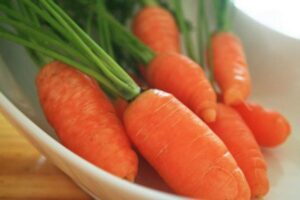Naked and Delicious: Embracing SIngle Ingredient Food

Our modern definition of food is synonymous with excessive amounts of ingredients, seasoning and ways to “enhance” flavor. We salt, spice and sweeten almost everything ad nauseaum, or we let corporate food manufacturers do it for us. They’re masters at crafting flavors we come to crave, making anything else seem lacking.
We all know just how amazing an unadulterated juicy piece of watermelon tastes, or a perfectly sweet ripe, fresh strawberry, an orgasmic homegrown tomato. These foods are so perfect they reject added flavors lest we lose their essence under a pile of salt or spice.
But aside from the fruits we savor on their own, we rarely indulge the natural flavors of other foods by themselves. Rather than look at a refrigerator or cupboard full of ingredients and lament “there’s nothing to eat,” embrace some of these single ingredient ideas. Start to allow your mouth to actually taste the incredible flavors and textures of foods in their purest form.
Vegetables
If you’re like me, you’ve long looked at carrots as destined to be part of something, rather than having the ability to stand on their own, which they do beautifully, particularly heirlooms. Sliced and lightly steamed, they become sweet and rich in savor-worthy flavor. While roasting them will require a drizzle of olive oil, the carrot flavor remains in tact. What other veggies can you roast or steam? Brussels sprouts, cauliflower, broccoli, squash, turnips, beets, tomatoes (roast or stewed are a personal favorite), kohlrabi, greens. And of course, lots of veggies are incredibly delicious totally raw, too. Have you ever noticed the sweet flavor of romaine lettuce? How about the yummy crunch and texture of celery?
Grains
Whole grains are nutty, rich and flavorful without the addition of seasoning or spices. They’re hardy carbohydrates, full of fiber, protein, vitamins and minerals, too. You’d be surprised just how satisfying a bowl of plain quinoa, brown rice, amaranth or millet can be. If you do need to add a little something, a pinch of salt, a drizzle of olive oil or fresh lemon juice (or diced lemon peel) can make a huge difference.
Beans
Beans and legumes are such an excellent protein choice because they also provide a big dose of fiber (as well as vitamins and minerals). And surprisingly, most of us have never eaten them without lots of seasoning. But they’re incredibly flavorful with unique textures that make them a great choice for a minimally prepared meal. Simply soak your beans overnight (lentils do not need soaking) and cook until tender (times vary between 1-3 hours depending on bean size). Black beans are a personal favorite for their softness and rich flavor. All they really need, if anything, is a pinch of salt.
While you can eat any of these on their own, you can make a satisfying, simple meal of a steamed or roasted veggie, steamed grain and beans.
Learning to appreciate foods without anything added connects you to these plants in a most intimate way. It is the pure essence of a carrot your tasting, rather than the mélange of seasonings or spices, and that’s a significant—dare I say spiritual—experience. And considering what we put inside our bodies actually becomes part of us, is there anything more important?
Keep in touch with Jill on Twitter @jillettinger
Image: ccharmon

